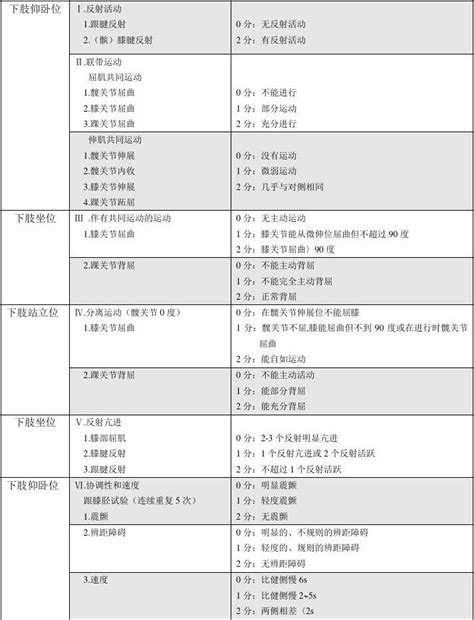Title: Developmental Assessment Standards for Early Childhood Physical Education
In early childhood, physical development lays the foundation for overall health and wellbeing. Assessing children's physical abilities during this crucial stage is vital for identifying areas of strength and areas needing improvement. Here, we delve into the essential benchmarks and standards for assessing the physical abilities of young children in early childhood physical education.
Introduction
Early childhood is a critical period for physical development. It's during these formative years that children acquire fundamental motor skills, develop coordination, and establish habits that can influence their lifelong health. Evaluating their physical abilities not only helps monitor their progress but also guides educators and caregivers in designing appropriate interventions and programs.
Key Areas of Assessment
1.
Gross Motor Skills
Running:
Assess the child's ability to run with coordinated movements, maintaining balance and speed.
Jumping:
Evaluate their jumping ability in terms of height, distance, and landing control.
Throwing and Catching:
Measure proficiency in throwing and catching various objects, considering accuracy and distance.
Balance and Coordination:
Observe how well the child maintains balance during static and dynamic activities, such as walking on a balance beam or navigating an obstacle course.
2.
Fine Motor Skills
Grasping and Manipulation:
Assess the child's ability to grasp, hold, and manipulate objects of different sizes and shapes, such as blocks, crayons, or puzzles.
HandEye Coordination:
Evaluate their ability to coordinate hand movements with visual cues, demonstrated through activities like catching a ball or threading beads.
3.
Physical Fitness
Endurance:
Measure the child's stamina and ability to sustain physical activity over time, such as completing a running circuit or participating in rhythmic movements.
Flexibility:
Assess the range of motion in their joints through stretching exercises and movements that require flexibility, like reaching for toes or performing yoga poses.
Strength:
Evaluate muscle strength and development through activities like climbing, pushing, and pulling.
4.
Sensory Integration
Proprioception:
Assess their awareness of body position and movement in space, observed through activities like balancing on one foot or navigating through obstacles with closed eyes.
Vestibular System:
Evaluate their sense of balance and spatial orientation, such as spinning, swinging, or tilting activities.
Assessment Tools and Methods
1.
Observation:
Skilled observation by educators and caregivers during structured physical activities and free play provides valuable insights into children's motor skills, coordination, and overall physical development.
2.
Standardized Tests:
Utilize ageappropriate assessment tools designed specifically for early childhood physical education, such as the Test of Gross Motor Development (TGMD) or the BruininksOseretsky Test of Motor Proficiency (BOT2).
3.
Checklists and Rubrics:
Develop checklists or rubrics to systematically assess different aspects of physical abilities, providing a clear framework for evaluation and tracking progress over time.

4.
Parental Input:
Involve parents or guardians in the assessment process, soliciting information about the child's physical activities, milestones, and any concerns they may have about their development.
Interpretation and Intervention
1.
Individualized Approach:
Recognize that each child develops at their own pace and may have unique strengths and challenges. Tailor interventions and support strategies based on their specific needs and abilities.
2.
Early Intervention:
Identify any areas of delay or difficulty early on and implement targeted interventions to address them promptly. This might include providing additional practice opportunities, adaptive equipment, or specialized instruction.
3.
Holistic Development:
Emphasize a holistic approach to physical education, integrating activities that promote not only physical skills but also social, emotional, and cognitive development.
4.
Progress Monitoring:
Regularly assess and reassess children's physical abilities to track progress, adjust goals, and ensure continuous improvement. Celebrate achievements and milestones along the way to maintain motivation and engagement.
Conclusion
Assessing the physical abilities of young children in early childhood physical education is essential for promoting healthy development and identifying areas needing support. By focusing on key areas of assessment, employing appropriate tools and methods, and adopting a holistic approach to interpretation and intervention, educators and caregivers can effectively support children in reaching their full physical potential during these formative years.

